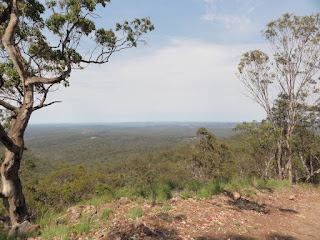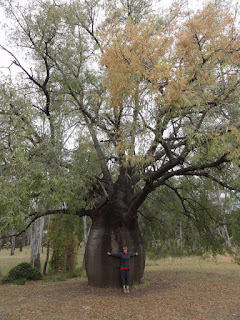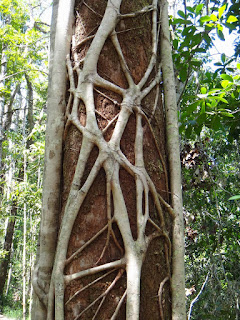As soon as we popped onto the western side of the great dividing range, the landscape became very dry again. Below is the Burdekin River with no water at all.
Emerald's claim to fame (besides the mining) is a giant Van Gogh painting. Can you see Kirsten sitting on a rock underneath it? That's how big it is!
We walked all the way to the end of the track at Big Bend, including all the side trips. It was a 24 km day!
There are many side gorges, some very narrow, many of them hard to access. Mickey Creek Canyon and Boowinda Gorge below.
The entrance to the Amphitheatre is only accessible since they built a stairway. It's a hidden 60m deep chamber gouged from the rock by running water. Absolutely amazing!
In the Moss Garden water drips constantly off the wall, supporting a lush carpet of mosses, ferns and liverworts.
The Boolimba bluff is 200m above the Carnarvon Gorge entrance. It usually has a fantastic view, except for when there are bushfires in the vicinity!
Besides many birds, roos, frogs and lizards, we saw echidnas, bandicoots, greater gliders, yellow-bellied gliders and even a Freshwater snake or Keelback snake (Tropidonophus mairii).
Carnarvon National Park stretches over 100km and can be accessed from different sides, the Carnarvon Gorge being the most popular section. We decided to check out the Mount Moffatt section as well, because it was sort of on the way (with a detour of only 300km!). It contains many unusual sandstone formations due to the basalt capping on top of the precipice sandstone.
Marlong Arch, ..
Cathedral Rock.
The track to get up onto the tableland was another 4WD challenge! Excellent fun!
One year post bush fire and a bit of rain and everything is blooming!!
Our camp in Lonesome National Park on the way home.
Roma is said to have the biggest boab tree in QLD! Not easy to hug!

























































